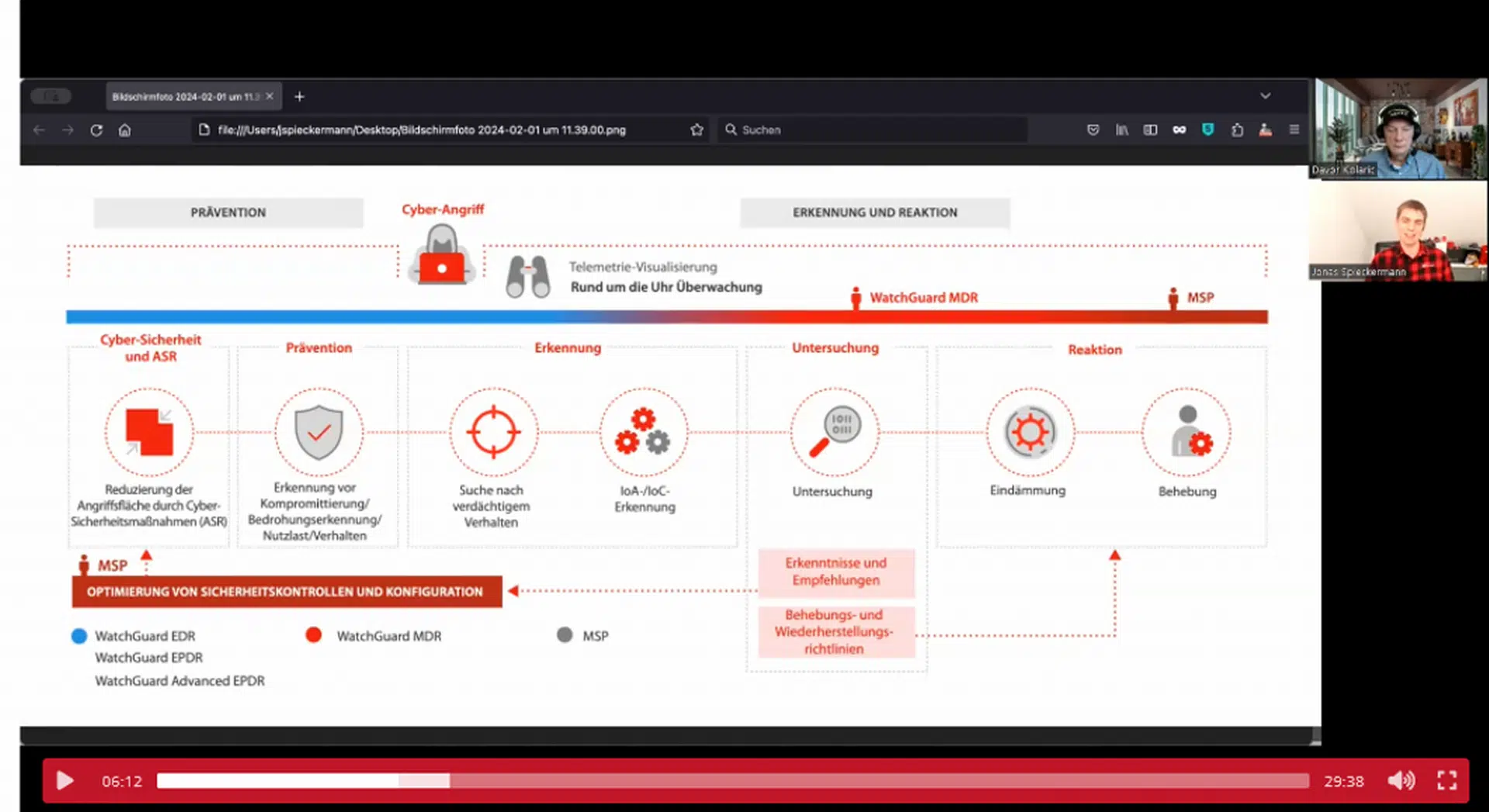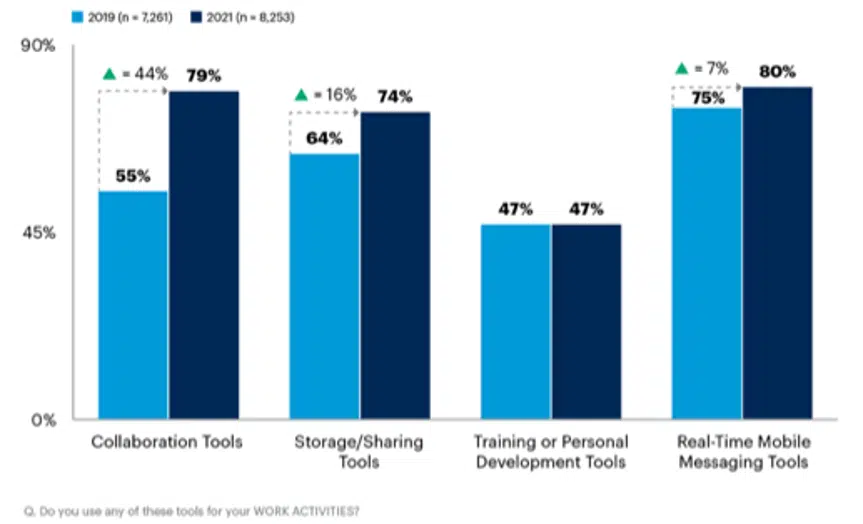
Digital Workplace Technologies Will Be Essential for Enabling Innovation in a Hybrid Workforce
Nearly 80% of workers are using collaboration tools for work in 2021, up from just over half of workers in 2019, according to the Gartner, Inc. Digital Worker Experience Survey*. This is an increase of 44% since the pandemic began.
“Collaboration tools found renewed importance during COVID-19 for their role in ensuring the productivity of suddenly remote teams,” said Christopher Trueman, principal research analyst at Gartner. “As many organisations shift to a long-term hybrid workforce model, cloud-based, personal and team productivity technologies, along with collaboration tools, will form the core of a series of new work hubs that meet the requirements of various remote and hybrid workers.”
Storage/sharing and real-time mobile messaging tools also saw increased use during the pandemic, used by 74% and 80% of 2021 respondents, respectively (see Figure 1).
Figure 1: Changes in Digital Workplace Technology Use, 2019-2021 (Percentage of Respondents)
Source: Gartner (August 2021)
Specifically, the use of meeting solutions surged during the pandemic. While workers globally reported that they spent, on average, 63% of their meeting time in-person in 2019, that number dropped to 33% by 2021 as more meetings took place over audio and video-enabled meeting solutions. The shift away from in-person meetings is expected to continue. Gartner predicts that by 2024, in-person meetings will drop from 60% of enterprise meetings to 25%, driven by remote work and changing workforce demographics.
“As IT leaders prepare for a mix of meeting modalities, it will be critical that they ensure equitable collaboration, tool and resource access for all meeting participants, regardless of location,” said Trueman. “Cloud-based meeting solutions and content service platforms can support this through offerings or integrations with technologies including virtual whiteboards, rich chat features, and recording and transcription capabilities.”
Gartner clients can read more in the report “Technology to Support Collaboration for a Hybrid Workforce.” Learn more in the complimentary Gartner webinar “Gartner 2021 Digital Worker Experience Survey Results: The Real Future of Work.”
Learn to make faster, smarter decisions — and generate stronger performance – by reinventing where, when and how work is done in the Gartner Future of Work Resource Center.
Fachartikel
Studien

Drei Viertel aller DACH-Unternehmen haben jetzt CISOs – nur wird diese Rolle oft noch missverstanden

AI-Security-Report 2024 verdeutlicht: Deutsche Unternehmen sind mit Cybersecurity-Markt überfordert

Cloud-Transformation & GRC: Die Wolkendecke wird zur Superzelle

Threat Report: Anstieg der Ransomware-Vorfälle durch ERP-Kompromittierung um 400 %

Studie zu PKI und Post-Quanten-Kryptographie verdeutlicht wachsenden Bedarf an digitalem Vertrauen bei DACH-Organisationen
Whitepaper
Unter4Ohren

Datenklassifizierung: Sicherheit, Konformität und Kontrolle

Die Rolle der KI in der IT-Sicherheit

CrowdStrike Global Threat Report 2024 – Einblicke in die aktuelle Bedrohungslandschaft

WatchGuard Managed Detection & Response – Erkennung und Reaktion rund um die Uhr ohne Mehraufwand













